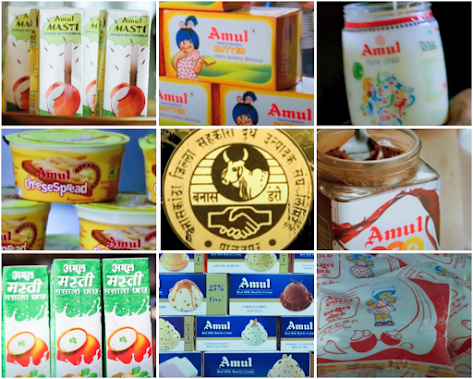Sheep farming and feed management In India
Sheep farming is a business of high profit with less labor. It doesn't need any special expenditure. There isn't any need for expensive accommodation to rear the sheep. Their feed management is also cheaper additionally. In hilly areas, they'll be rear on by grazing, and only by grazing, they'll produce good quality and quantity of meat, milk, and wool. But, the sheep have a special face structure through which they'll graze or eat the stubble left after the harvest of crops very easily and precisely. Like this, they need the potential to convert crop residue into a product. According to the 20th census, the population of sheep in India is 74.26 million. Whereas in keeping with the census report of 2012, the sheep population decreased up to 9% from 2007 to 2012. The effective reason behind this fall in population is that the increasing demand for sheep meat and also the reproduction capacity of sheep also decreases. As we will conclude increasing demand within the market opens the varied door for the assorted business to place their feet in sheep farming businesses. In keeping with the report of FAO ( Food and Agriculture Organisation), the leading countries in sheep farming include China, India, Australia, Iran, and Sudan.
Selection of the breed is the most crucial task in planning sheep farming. Breeds are selected in step with the climate and their consumption purpose. The main breeds rear in India are:
- Milk breeds:
1. Lohi
2. Kuka
3. Gurej
2. Meat breeds:
1. Hasan
2. Nellore
3. Galloni
4. Sahabadi
5. Baziri
3. Wool breeds:
1. Bikaneri
2. Ballari
3. Chokla
4. Bahakarwal
5. Katiawadi
6. Marwari
7. Malpuri
Sheep can be rare in every form of climate but the breeds should be selected in line with the climate of the world. There are various breeds for each suitable climate. The diet of the sheep is extremely simple, as they used to eat grass. There are many types of grasses that sheep like to eat, but additional nutrition is also required together with grazing for better productivity. The extra nutrition is determined and given according to their age cycle.
Lamb:
- Colostrum is the most essential diet given to the lamb after 1-2 hours of birth because the colostrum has various antibacterial ingredients that protect the newborn lamb from several diseases.
- Only colostrum is given to the newborn lamb thrice daily for the primary 3 days.
- It's recommended to provide 250g of milk daily for two weeks.
- After 2 weeks farmers can start feeding grains and a mixture of nutritional feed.
- After 3 months lamb should be given full-stomach green feeding.
- For 1 year of lamb, 8-9 hours of grazing are a requirement and 250g of grains are necessary. Within nighttime, grains like Berseem, Gram, and Guar should tend for feeding that's why till 15 months they become adults and mature enough to breed.
Pregnant Sheep:
- A pregnant animal requires more energetic food. So, the pregnant sheep should tend Maize, Oats, and Barley for feeding.
- Before some days of parturition, the number of grains should be decreased.
- After giving birth to the new lamb a protein-rich and energetic diet should be given.
- The quantity of fooder and grains should increase slowly after the delivery of pregnant sheep.
Milking Sheep:
- Subsistence and productive food should be given to the milking sheep because the quantity and quality directly depend on the feeding of the animal. Health and growth are dependent on milk production.
If we discuss the accommodation 12 x 15 places are enough for 50-60 sheep. The ground or floor of that place should be soft and raw because the sheep have very fragile hooves. The place follows hygiene. It should be neat and clean with a well-ventilated rooftop. The vaccination should even be followed regularly to shield the sheep from diseases. Sheep produce a median of two-time wools in an exceedingly single year and from a decent and healthy breed of sheep, we will get newborn lamb twice in a very year.
Importance of Sheep rearing in Indian Agricultural:
1. Adapted to different agro-climatic conditions.
2. Unfastidious in food habit
3. No religious prejudice against Chevon.
4. Low cost of maintenance, short-term return, and low risk better suited to small and marginal farmers.
5. Can thrive in conditions where cows and buffaloes can't sustain.
6. 35% of meat production and 3% of milk production in India.
7. During grazing 50% of the time is spent on tree leaves.
8. Being smaller in size - with a larger area, well adapted to high-temperature - arid areas.
9. Semi-arid areas with sparse vegetation, bushes, and shrubs - steeply sloped mountainous regions can not be fitted to cattle but to goats and sheep.
10. Physical characteristics of various breeds in various regions are well adapted to the local needs - large sizes with longer legs to suit longer distances go in high-temperature areas and tiny sizes with shorter legs are found in humid areas.
11. Special feeding habits of upper lips with high prehensile tongue can take fodder, not easy to take by other livestock species.
12. Higher crude fiber digestibility.
13. High growth rate in body weight.
14. Adaptable to any system of management.
15. No competition citizenry.
16. Sheep waste can be used as manure from one sheep is enough to manure half an acre.
17. Sheep are highly resistant to diseases.




Comments
Post a Comment